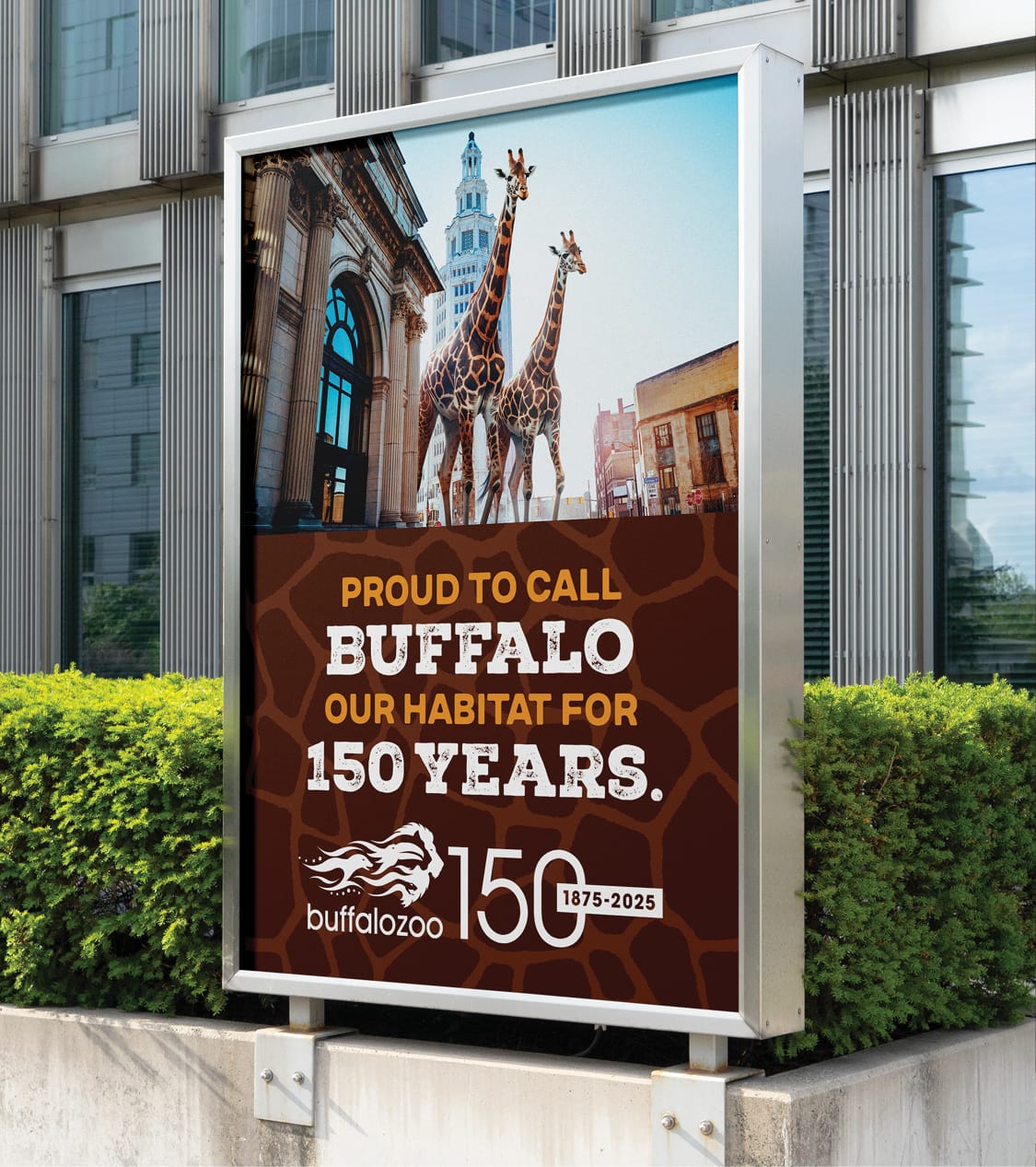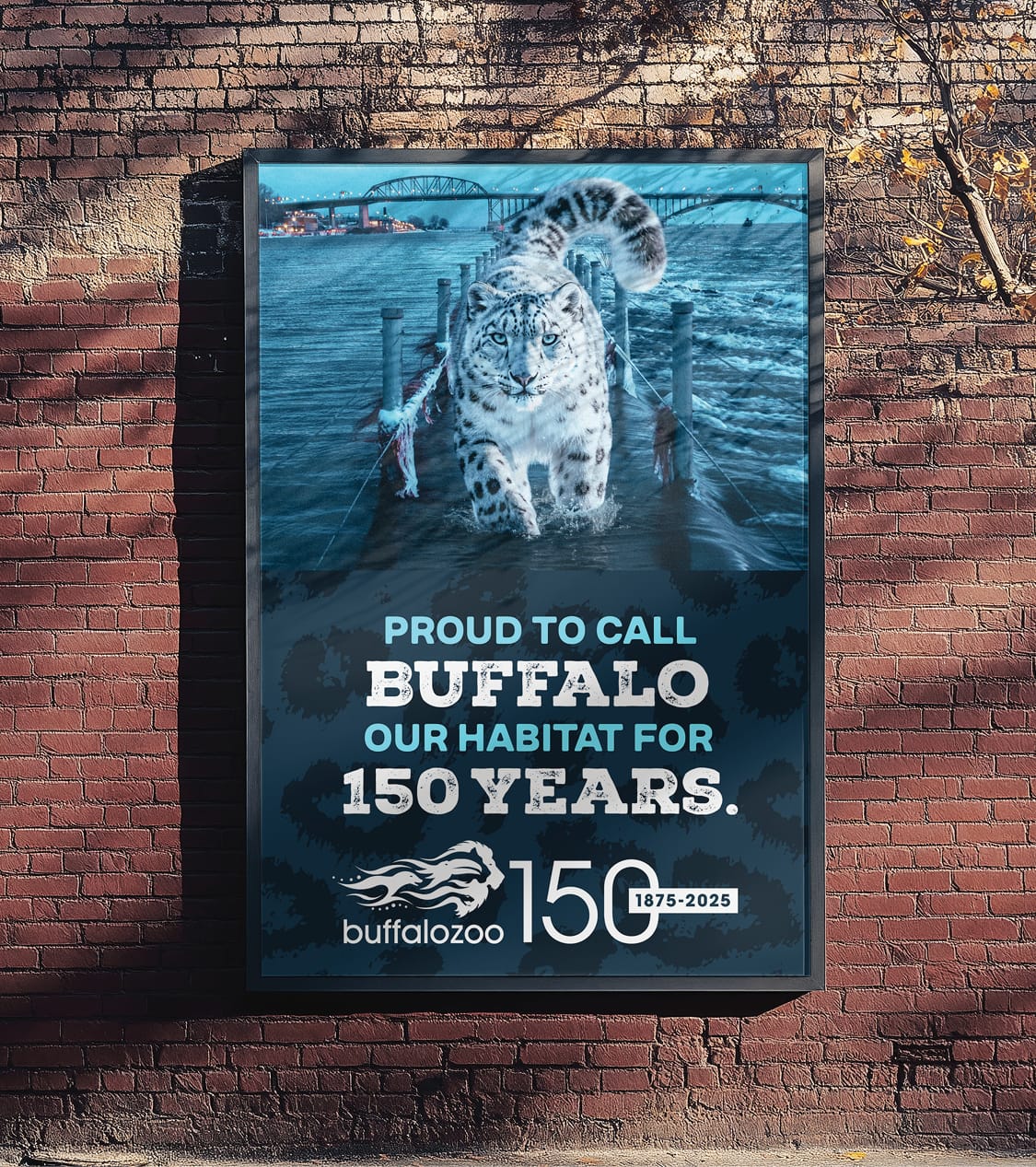The power of integrating AI into your brand’s next creative campaign.
When it comes to AI in design as an art director and creative supervisor here at Crowley Webb, it’s not as much about shortcuts as it is about having the ability to bring to life the very best idea for the brand. There is nothing like crafting an idea from hand or collaborating with a local photographer in town. But then you have ideas that a.) would be brilliant for the brand but are wildly outside their budget and time constraints and b.) are physically impossible for a designer to execute. It’s times like these where I consider AI for brands.
For a campaign that celebrated The Buffalo Zoo’s 150th Anniversary, two out of three of our concept options heavily leveraged AI in the design.
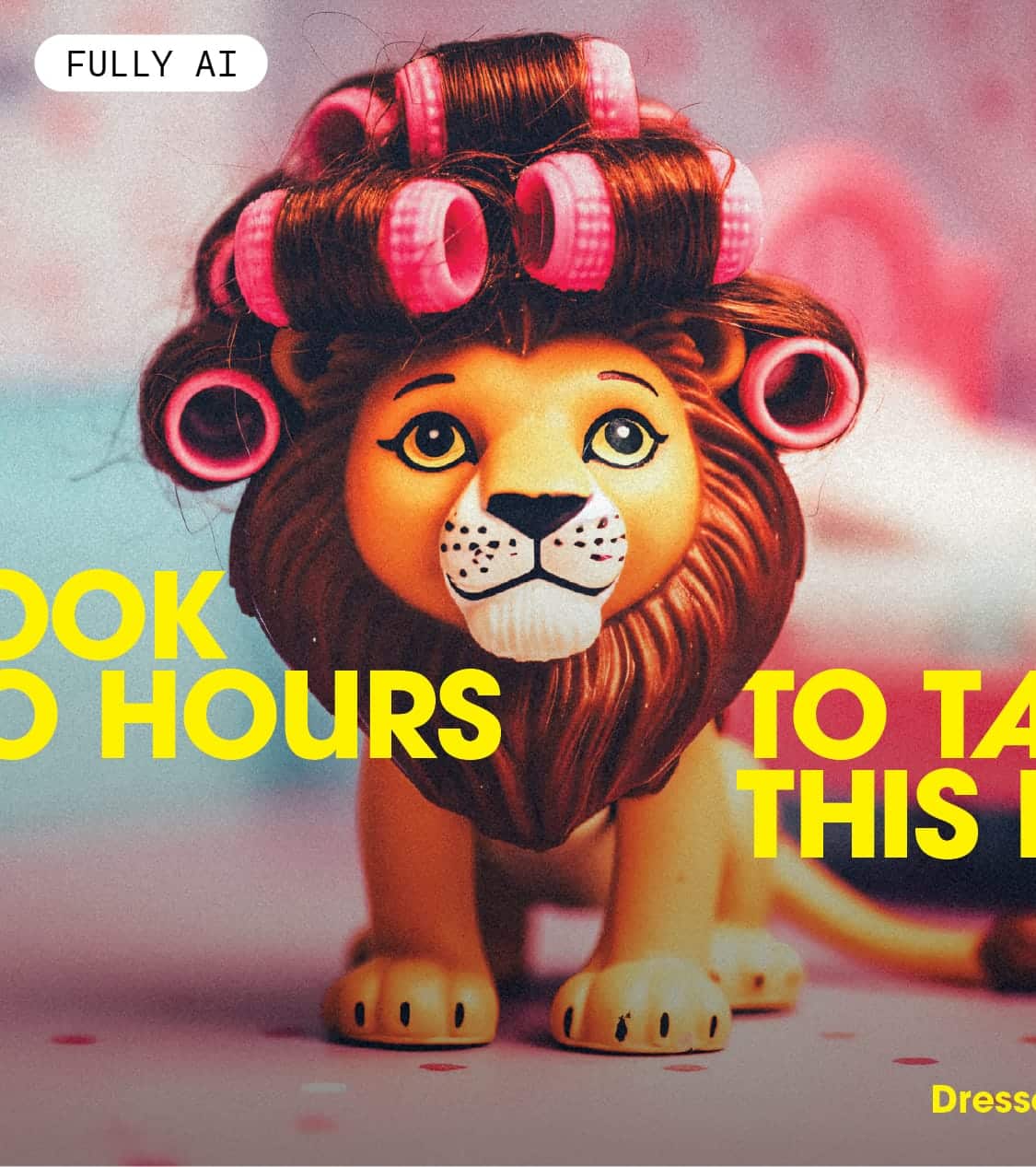
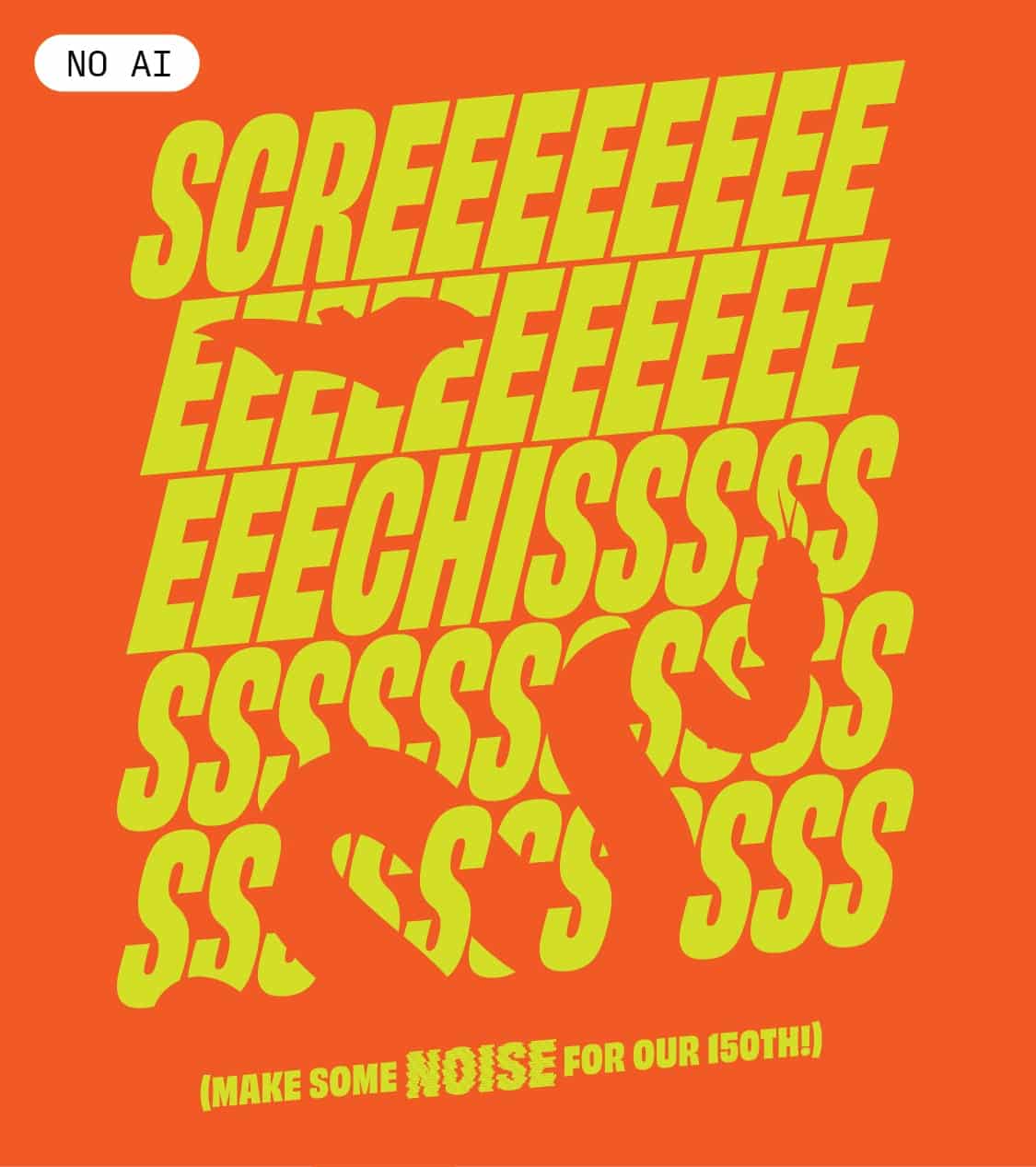
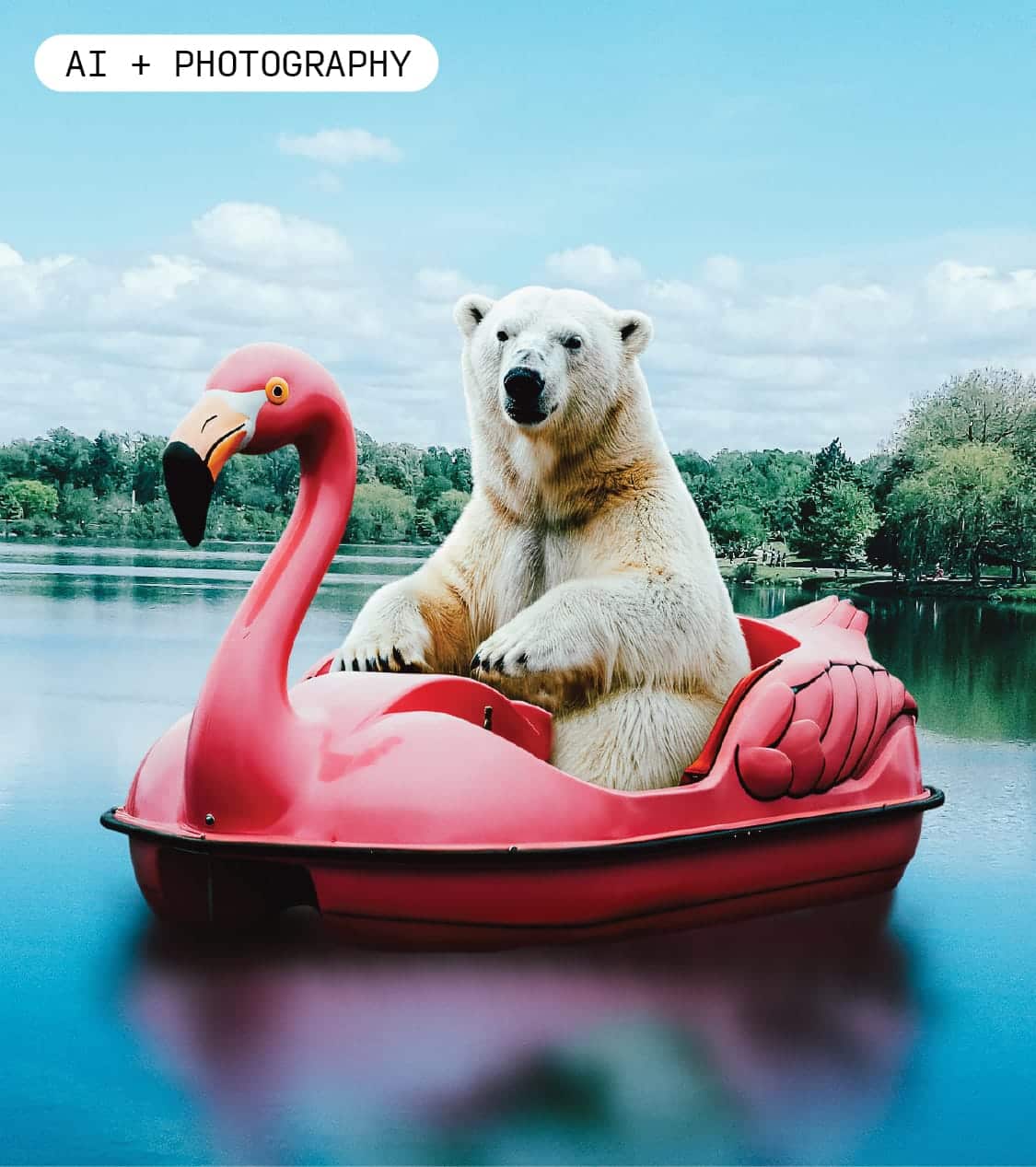
The two AI-driven concepts weren’t just our team’s overwhelming favorites, they were the client’s too. Why? Because they were unexpected, boundary-pushing, and traditionally out of reach for a smaller-sized client. We moved forward with this option, bringing real zoo animals into iconic Buffalo destinations, a concept that would have been beastly out of budget and honestly impossible to pull off. I’m probably not finding a stock photo of a polar bear sitting in this exact position and I’m definitely not asking one to smile and wave on a set.
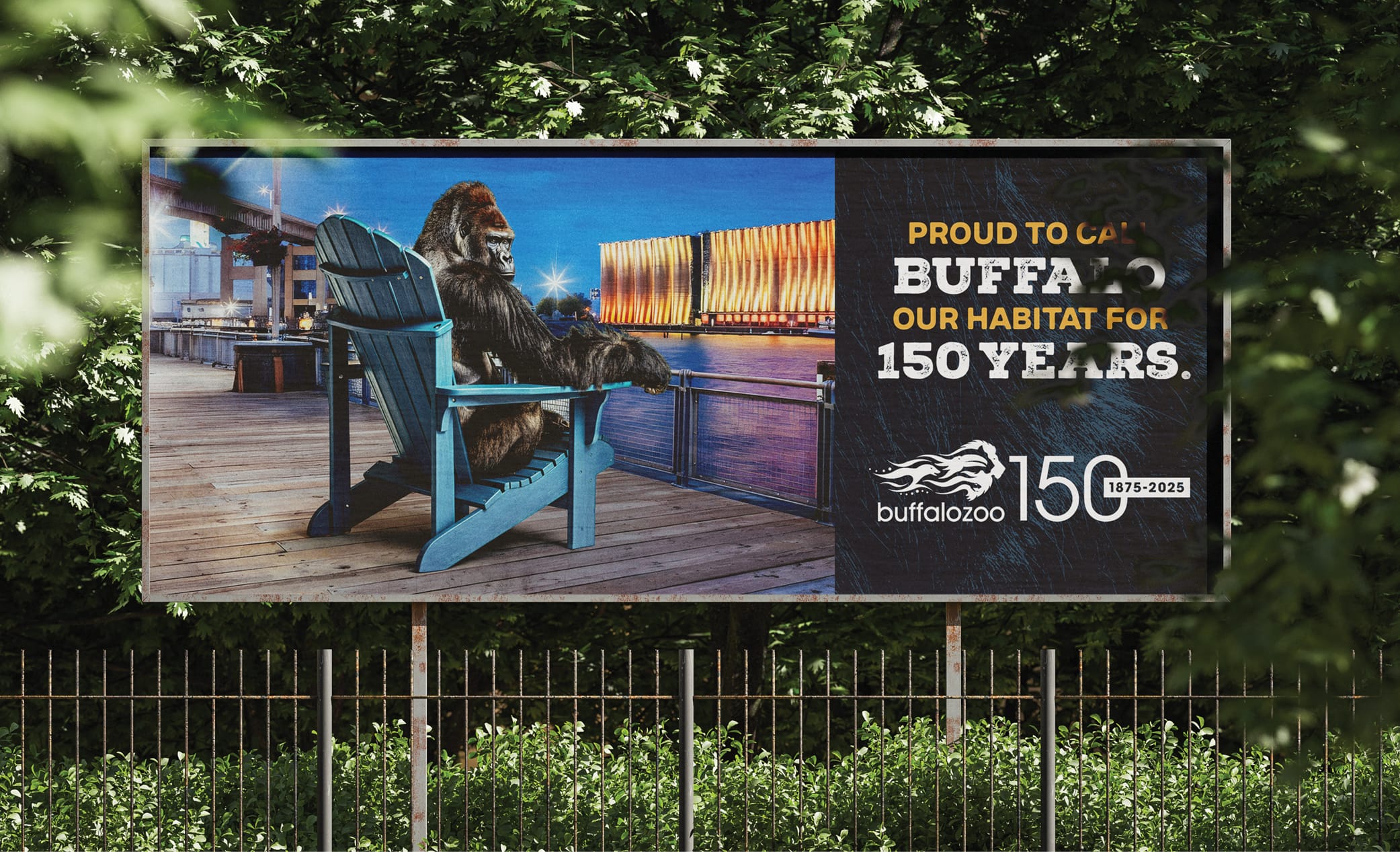
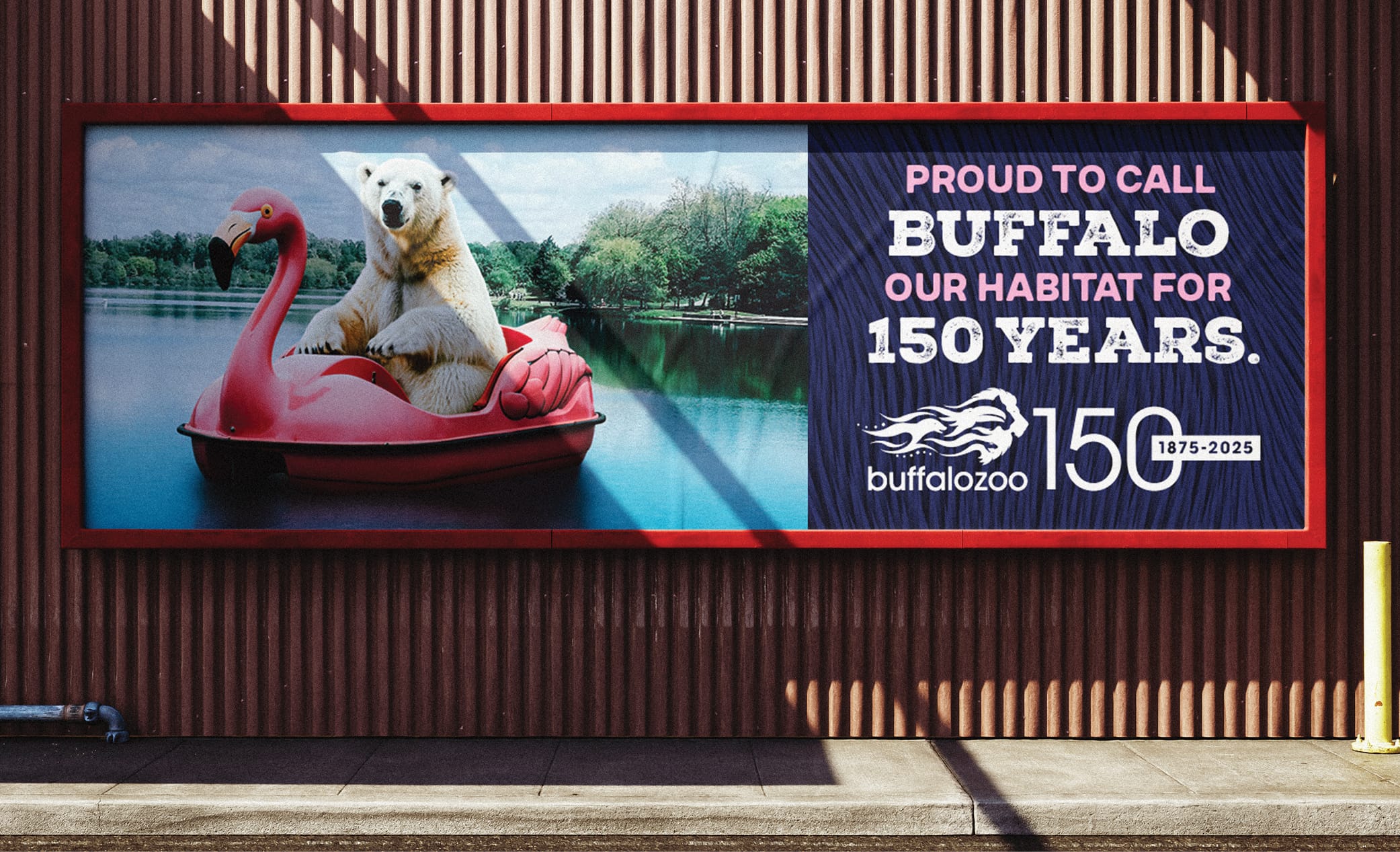
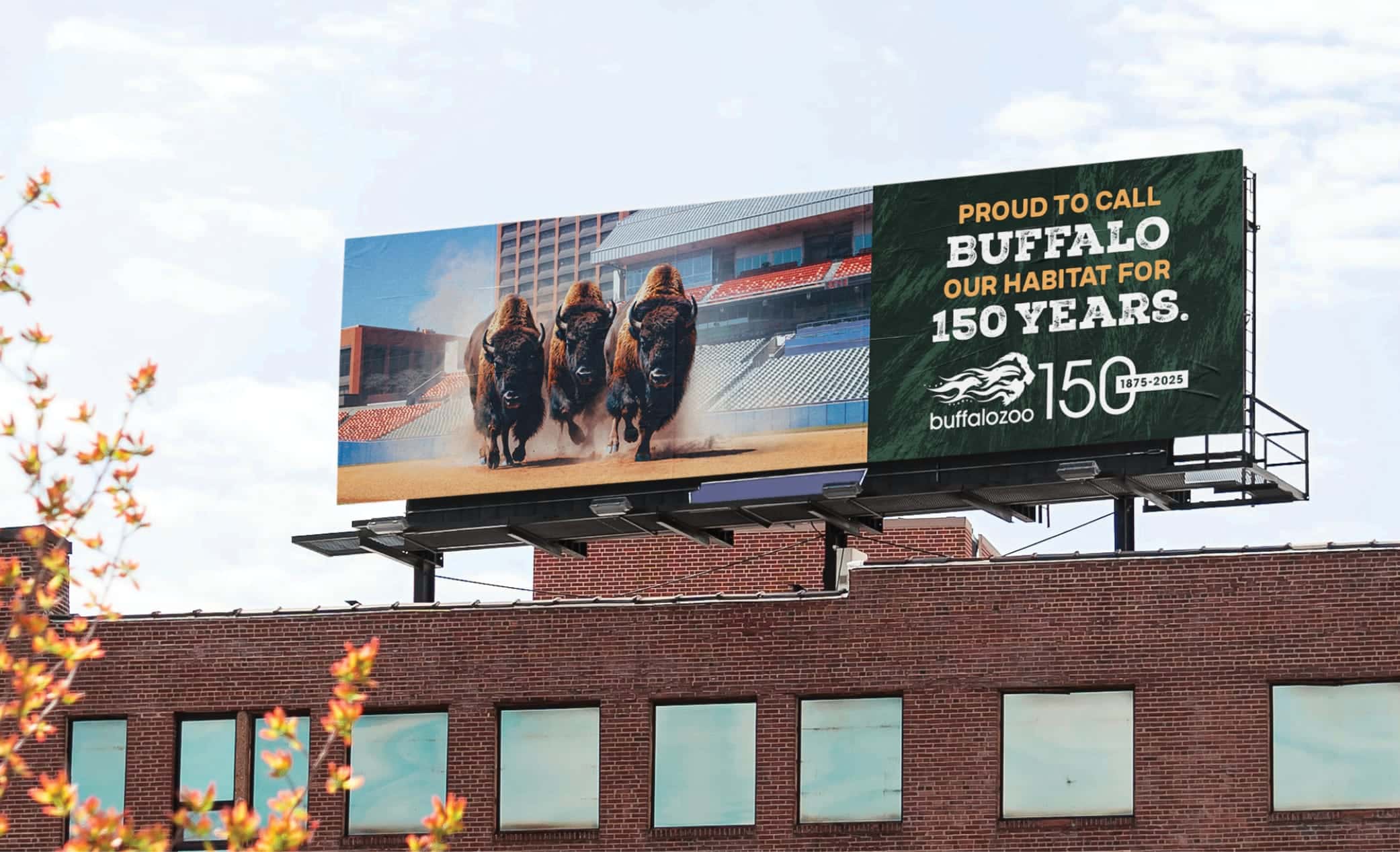
I’m not afraid of AI being integrated into design. To me, AI platforms are creative partners, similar to a photographer or editor. I still need to art direct it at great depth. Typing “gorilla in chair” didn’t deliver our final campaign art. I had to carefully direct AI to make the animals exact pose, angle, expression, posture, coloring, etc. It’s truly a creative process. And there was still traditional creative work to be done in tandem like capturing the Buffalo destinations with our director of photography, retouching, adding type, designing supporting visuals, etc. There is a clear difference between AI-generated and art directed AI. But I’ll let this side-by-side comparison speak for itself.
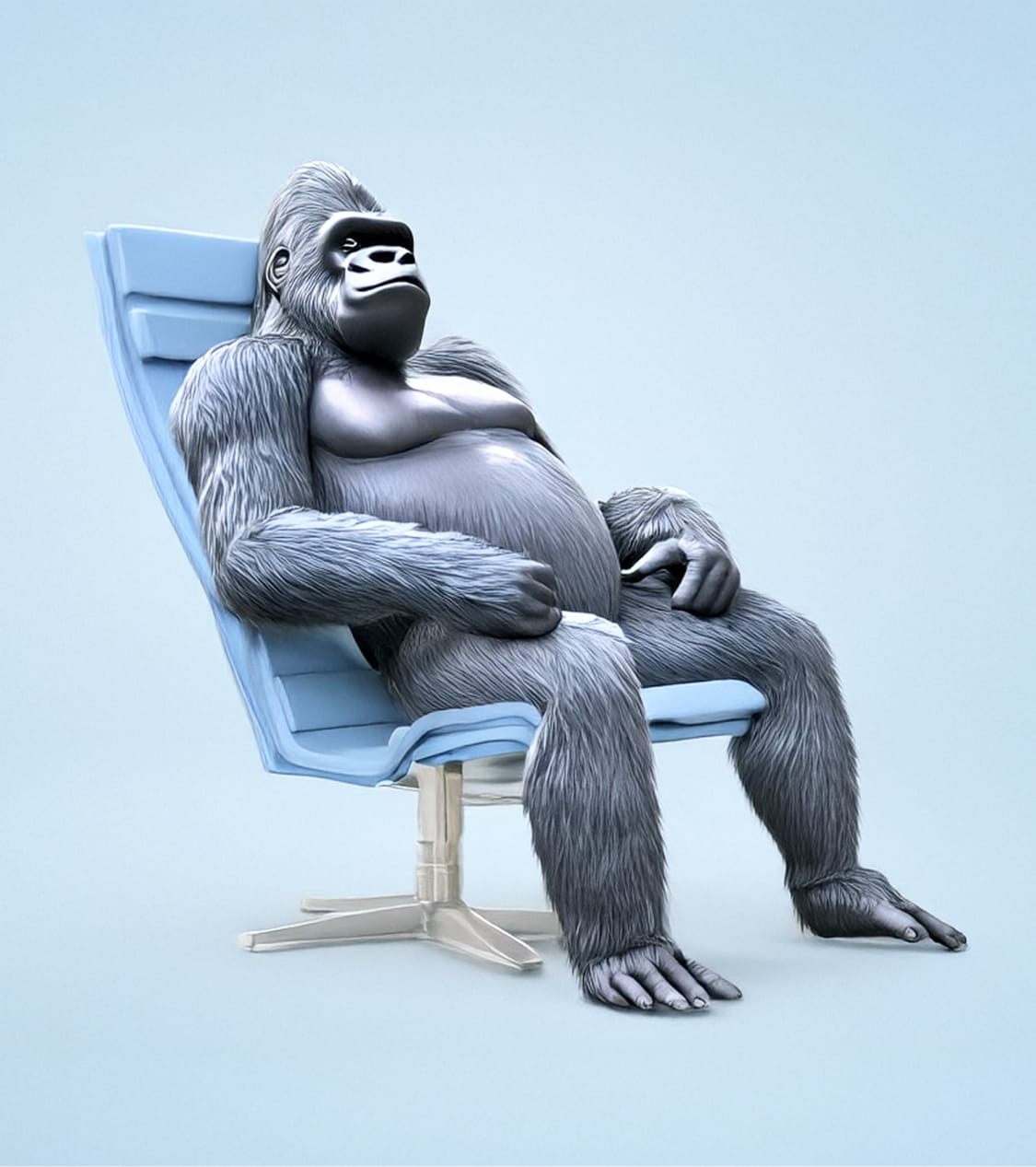
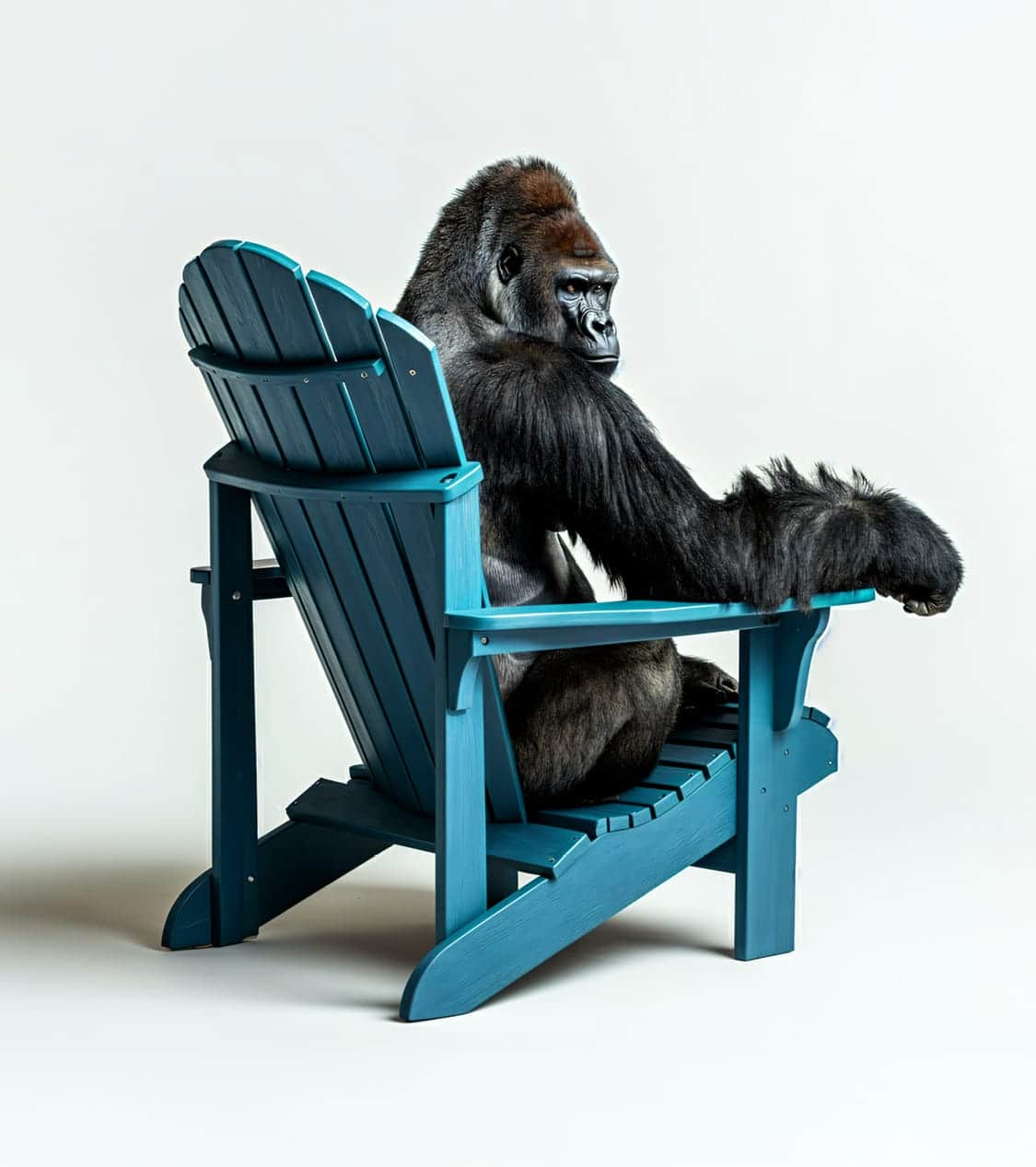
What’s also powerful is certain AI applications allow your generative art to be kept private and no one else can use it – keeping originality alive.
Flexibility is also a huge benefit of automated intelligence. We were able to have a healthy amount of back and forth with the client to explore various environmental and animal options that they’d be happy with and make tweaks along the way. This never would have happened if we were working with a retoucher or shooting the animals ourselves. It felt nice to be able to say to the client “Yeah sure, we can try that,” and help increase their satisfaction with the final product.
AI isn’t an art director, but it is a force multiplier. And that means creativity is no longer caged by budget or time. Now, the boldest brand ideas can roam free. And we get to make them roar.
